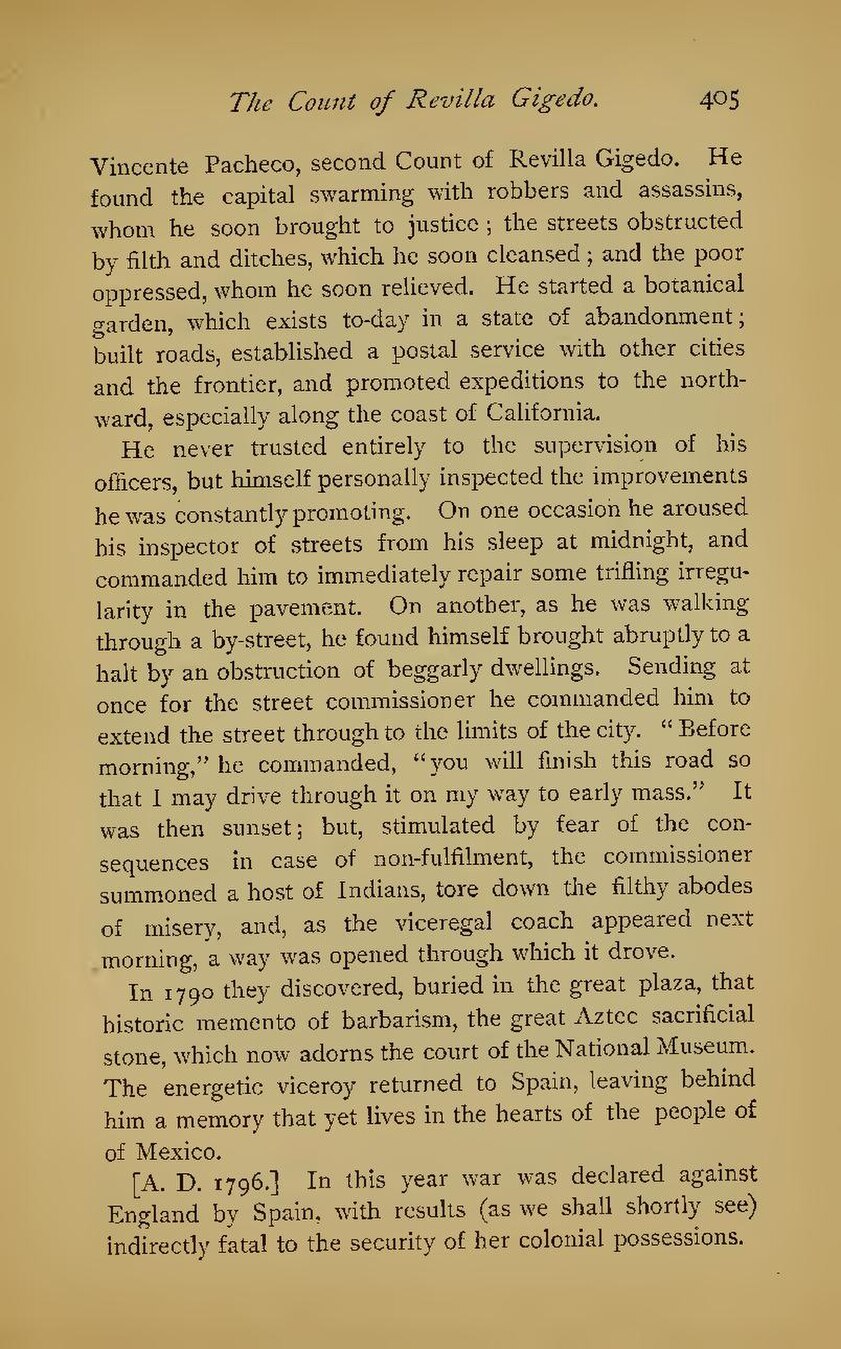Vincente Pacheco, second Count of Revilla Gigedo. He found the capital swarming with robbers and assassins, whom he soon brought to justice; the streets obstructed by filth and ditches, which he soon cleansed; and the poor oppressed, whom he soon relieved. He started a botanical garden, which exists to-day in a state of abandonment; built roads, established a postal service with other cities and the frontier, and promoted expeditions to the northward, especially along the coast of California.
He never trusted entirely to the supervision of his officers, but himself personally inspected the improvements he was constantly promoting. On one occasion he aroused his inspector of streets from his sleep at midnight, and commanded him to immediately repair some trifling irregularity in the pavement. On another, as he was walking through a by-street, he found himself brought abruptly to a halt by an obstruction of beggarly dwellings. Sending at once for the street commissioner he commanded him to extend the street through to the limits of the city. "Before morning," he commanded, "you will finish this road so that I may drive through it on my way to early mass." It was then sunset; but, stimulated by fear of the consequences in case of non-fulfilment, the commissioner summoned a host of Indians, tore down the filthy abodes of misery, and, as the viceregal coach appeared next morning, a way was opened through which it drove.
In 1790 they discovered, buried in the great plaza, that historic memento of barbarism, the great Aztec sacrificial stone, which now adorns the court of the National Museum. The energetic viceroy returned to Spain, leaving behind him a memory that yet lives in the hearts of the people of of Mexico.
[A. D. 1796.] In this year war was declared against England by Spain, with results (as we shall shortly see) indirectly fatal to the security of her colonial possessions.
